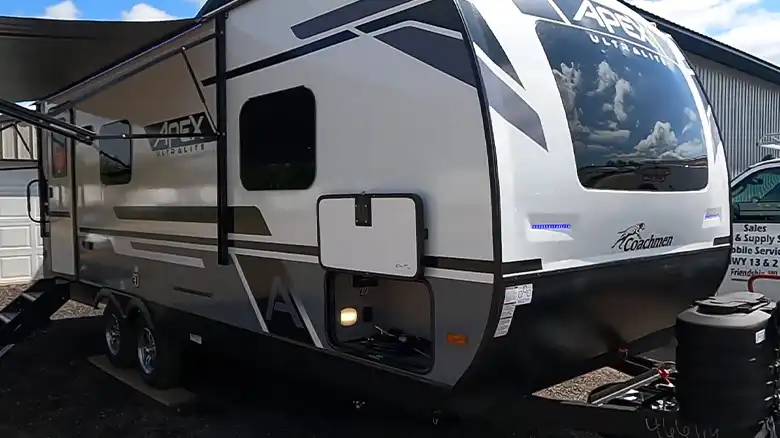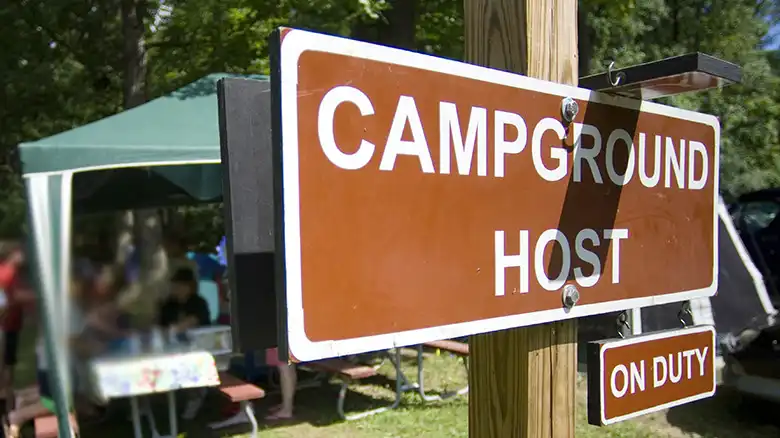Recreational vehicles (RVs) open up a world of adventure and freedom. With an RV, you can travel across the country and enjoy the comforts of home along the way. However, RVs require a substantial investment. Most new models range from $75,000 up to $500,000 or more. Even used RVs typically cost $20,000+. With this level of investment, choosing the right RV for your needs and preferences is essential.
The perfect RV balances purpose, amenities, ease of use, and affordability. By carefully weighing factors such as floorplans, features, drivability, and ownership costs, you can select the ideal rig. While the options may seem overwhelming at first, understanding your needs helps narrow the choices. Test drives and thorough research also set realistic expectations. With some guidance and self-reflection, finding your perfect recreational vehicle can be fun and rewarding.
This article explores key considerations when selecting an RV for full-time living or vacation travel. Read on for tips to choose the right recreational vehicle to fulfill your dreams of adventure on the open road.

Understand Occupancy and Storage Needs
Identify the Purpose
Will this serve as a full-time residence or primarily a vacation vehicle for weekend and summer trips? Envision how you plan to use the RV. This clarifies the appropriate size, features, and type needed.
Full-time RVers require more living space and storage. They also use the rig daily rather than occasionally, so durability and reliability take priority. Families also appreciate roomy interiors and separate sleeping quarters. For vacations and getaways, smaller towables work nicely. Carefully define the purpose before shopping.
Consider Occupancy
How many people need sleeping accommodations? Will pets join the adventures? The number of occupants impacts the floor plan. Murphy beds, bunks, cab-overs, and convertible dinettes provide sleeping capacity. Slide-outs also widen the interior living space. Make sure to select an RV with adequate sleeping capacity for passengers, accounting for future growth too.
Assess Storage
What gear and belongings need securing? Storage capacity varies drastically between RV types. As a rule of thumb, classify items as “must-haves” (large wardrobe, hobby supplies, pet accessories, etc.) versus “nice-to-haves.” This helps balance storage wants with practicality. Towables offer cavernous cargo space but limit interior capacity. Drivable motorhomes provide abundant interior living areas yet less exterior storage. Define storage musts when selecting an RV.
Explore RV Types and Features
Many types of rigs fall under the recreational vehicle umbrella. By learning the uniqueness of each, you can zero in on the best choice.
Motorhomes
Motorized RVs contain driving cabs and onboard engines. The steering wheel, foot pedals, seats, and mirrors provide a driving experience akin to a large van or truck.
Class A
The largest and roomiest choice, Class A models resemble tour buses. Their flat front profile originates from the driver’s area fully integrated into the living space. Lengths range from 26 to 45 feet.
Pros: Exceptional living space, storage capacity, and creature comforts.
Cons: Immense size limits maneuverability and access to some locales. High cost both to purchase and operate.
Class B
Class B camper vans built using commercial van chassis provide a nimble, smaller motorhome. Their dimensions range from 17 to 23 feet. Some models feature pop tops to add extra sleeping space.
Pros: Driveability and parking akin to a full-size van. Better fuel economy than larger motorhomes.
Cons: Tight interior quarters lacking slide-outs or spacious living areas.
Class C
Class C motorhomes strike a balance between size and function using a cutaway van cab with an integrated house-like body. Familiar exteriors painted with bold graphics set them apart from other RV classes. They range from 25 to 35 feet long.
Pros: Maneuverable for most camping locales while still rather spacious inside. More affordable than Class A.
Cons: Tight living quarters compared to a Class A. Cab-over bed limits privacy.
Towable RVs
Towables offer versatility through detachment from the tow vehicle. They encompass travel trailers, fifth wheels, pop-up campers, and truck campers. Lighter-weight construction provides roominess while optimizing fuel efficiency during transport.
Travel Trailers
Travel trailers rank among the most popular RV choices thanks to affordable prices and family-friendly layouts. Lengths span from 10 to 35 feet with slide-outs increasing interior capacity.
Pros: Lightweight, aerodynamic design ideal for towing. Roomy interiors with custom layouts are available. Better fuel economy than drivable RVs.
Cons: Reliant upon a properly equipped tow vehicle. Limited storage since gear must fit inside the unit. Most lack onboard power generators or holding tanks.
Fifth Wheels
Named for the gooseneck hitch grabbing a spot above the rear axle, fifth wheels offer superior stability thanks to centralized weight distribution while towing. Lengths range from 25 to 45 feet.
Pros: Ideal for full-timing given spacious rooms and maximum towing stability. Higher-end models rival Class A luxury.
Cons: Require a heavy-duty tow vehicle. Difficult to maneuver in tight spaces. Higher cost and maintenance needs than smaller towables.
Pop-Up Campers
Pop-up campers fold down for compact towing then crank upward once parked. Canvas tents stretch across collapsible bunks to complete the living area housed within a metallic body measuring 8 to 16 feet.
Pros: Very lightweight and elegant. Simple setup perfect for weekends and tighter budgets.
Cons: Sparse amenities and little interior space – best for occasional short trips rather than continuous travel.
Truck Campers
Truck campers are the wild cards of RVing. Ranging from 6 to 18 feet long, these mini motorhomes sit inside truck beds supported by wheel wells. Amenities mimic those inside travel trailers.
Pros: Provide RV living without towing a trailer. Give trucks flexibility serving as both daily drivers or recreational bases.
Cons: Very cramped interior quarters. The truck must handle significant added weight from the camper. Difficult to access amenities while in transit.
Budget Considerations
Recreational vehicles entail extensive purchase costs and continued expenses. Realistically evaluate if ownership aligns with your budget.
Purchase Cost
Motorhome prices vary drastically. Used Class C models start around $30,000 whereas new Class A coaches approach $500,000. Among towables, folding pop-up campers offer the most reasonable rates at $8,000+ for new models and $2,500+ for used. Fifth wheels sit at the high end averaging $50,000 new.
Ownership Costs
In addition to the sales price, factor gear, loan interest, insurance, maintenance, campground rates, and fuel. Most sources estimate approximately $5,000 annually beyond the purchase price. Thus a $50,000 fifth wheel becomes a $100,000+ commitment over 5 years. Determine if you can manage higher monthly budgets before selecting an RV.
Size and Maneuverability Tips
Recreational vehicles span a vast spectrum from nimble trailers to 45-foot motorcoaches. Consider how size impacts driving, parking, storage, and access. Maneuvering a massive RV through winding mountain passes or into tight campsites proves challenging. Evaluate your skills behind the wheel as well – particularly with towables.
Evaluate Towing Capacity
Towable RVs rely on properly equipped vehicles for transport. Confirm your truck or SUV offers adequate tow ratings and hitch setups before purchasing a trailer. Weight limits vary greatly between vehicle makes and models. Experts advise staying at 75-80% of the rated tow capacity for optimal control, braking, loading, and stability.
Accessibility
Nimble rigs easily navigate winding paths with low clearances and tighter turning radii. For scenic locales with limited road widths or smaller campsites, select a mid-size RV. Massive motorhomes occasionally encounter issues reaching certain destinations. This limits vacation locales unless you downgrade accommodations to tents or cabins once parked.
Parking & Storage
Take measurements of your garage or driveway and research options that fit. Consider where the RV stays between trips too. Many campgrounds offer seasonal storage yet costs add up quickly. Finding vacation sites with large pads and easy maneuverability prevents headaches down the road.
Amenities for Comfort and Convenience
RVs house all the comforts of home with a variety of luxury features available too. From kitchen gadgets to outdoor entertainment systems, the options seem endless. Prioritize necessities versus extras that may prove unnecessary after purchase.
Necessary Amenities
Start with basics like comfortable beds, bench seating converted to sleeping space, a dinette for meals, a functioning toilet, a private shower, kitchen appliances, and a freshwater holding tank. Test drive different RVs to confirm the layout works for your needs and sleeping capacity.
Creative Storage Solutions
Well-designed RVs maximize every inch of space through clever storage hacks. Look for compartments under beds, benches, and dinettes along with exterior bays and racks. For full-timers moving household goods, prioritize volume.
Climate Control
Heating and air conditioning make trips comfortable regardless of locale. Test appliances like rooftop AC units and furnaces during test drives. Insulation also buffers temperatures. With 4 seasons of adventure ahead, make climate control a priority.
Luxury Features
While not essential, amenities like exterior entertainment systems, fireplaces, tile backsplashes, and residential refrigerators elevate adventures. For households debating full-time RV living, test drive luxury models to glimpse the experience. Just beware fancier fixtures often equal higher repair costs down the road.
Deciding Between New and Used RVs
Doing your homework before purchase prevents disappointments with quality or functionality. Spend time reading impartial reviews and researching manufacturers. This safeguards your investment and sets realistic expectations.
Evaluate Other Owners’ Experiences
With over one million Americans living in RVs full-time, firsthand perspectives offer invaluable insight. Search review forums discussing pros, cons, recalls, and real-world functionality feedback. Verify aspects like climate control and storage capacity meet expectations. Listen to fellow adventurers before deciding.
Research Brand Reputations
Study the manufacturers behind different recreational vehicles. Some names like Winnebago and Tiffin built loyal followings delivering consistent quality over decades. Other newer players still establishing reputations may offer more risk. Examine warranty terms as one reflection of reliability expectations too.
Watch for Recalls or Widespread Issues
Repair costs quickly snowball RV expenses. Mass-produced recreational vehicles occasionally release with systemic defects needing retrofitting. Before purchase, check databases for issues and recalls associated with the makes and models under consideration. This safeguards investments against expensive repairs.
New vs Used RVs: Making the Choice
Purchasing new provides predictability whereas pre-owned deals offer savings. Weigh the pros and cons of deciding between new or used.
Benefits of New RVs
Opting for an untouched rig means flawless finishes and the latest features. New RVs verify no hidden issues linger while comprehensive warranties bring peace of mind. Custom build-outs perfect for full-timers allow tailoring to specific needs too.
Used RV Considerations
The vast selection of pre-owned RVs appeals to bargain hunters. Initial depreciation passing from the first buyer to you buffers costs significantly – easily 50% discounts versus new. Extra savings get reinvested in repairs or upgrades. Just maintain realistic expectations about wear and tear.
Thoroughly test functionality on appliances, slide-outs, electrical components, and entertainment systems. Scan for foundation damage too – water leaks and rodents plague neglected RVs. A pre-purchase inspection identifies underlying issues before sale finalization. Factor repair costs into negotiations.
Embrace Sustainable RV Options
Partaking in RV travel need not detract from environmental values. Various choices reduce impacts for eco-minded explorers. Both purchasing decisions and operational tweaks go a long way.
Evaluating Environmental Footprints
Look beyond the pristine nature scenes gracing RV brochures. These impressive machines carry consequences for the planet. Large motors and excessive mass burn substantial fossil fuels while lumber and composites require extensive resources to manufacture. Consider sizing, construction techniques, and fuel sources mitigating emissions.
Seeking Sustainable Designs
Thankfully greener options emerge in response to consumer demand. Some companies now construct RVs using sustainable materials and processes – think renewable bamboo floors instead of formaldehyde-laden plywood. Electric drivetrains and solar power supplements minimize emissions too. Seek them out to lessen impacts.
Conclusion: Finding the Perfect Recreational Vehicle
With endless choices between drivetrains, sizes, features, and budgets – selecting the perfect RV feels overwhelming initially. Simplify decisions by reflecting on needs, researching meticulously, and allowing time for the right rig to emerge. Test drives also showcase if expectations align with reality before committing. Patience pays when dealing with major investments promising years of loyal companionship on the road.
Define must-have capacities and purposes upfront. Compile lists of necessities – then stick with them while shopping for various makes and models. Take measurements and extensively browse reviews too. Discuss with fellow RVers for transparent experiences. Once confident in the homework, exciting test drives commence. Drive top contenders to assess if the rig performs as expected. Bring friends or family to capture different insights as well.
Don’t feel rushed either – major purchases deserve due diligence. Allow enough runway to thoroughly research all the nitty gritty details before exchanging cash for keys. The perfect RV awaits to carry you on worry-free adventures for years ahead.


